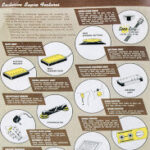The shape of an electric guitar body is more than just an aesthetic choice; it’s a visual statement that resonates as powerfully as the music it helps create. For guitarists, the body shape of their instrument often becomes intertwined with their personal style and musical identity. Think of the legendary B.B. King and his beloved Lucille, a Gibson ES-335, or the iconic image of Angus Young wielding his Gibson SG – these guitars are instantly recognizable and deeply associated with the artists who played them. The electric guitar body is the first thing that captures attention, setting the stage for the sonic experience to follow.
In this guide, we’ll explore the captivating world of electric guitar body shapes. From the timeless curves of the Fender Stratocaster to the radical angles of the Gibson Flying V and Explorer, each shape carries with it a rich legacy of design innovation, ergonomic considerations, and musical history. Understanding these shapes is key to appreciating not only the visual appeal of electric guitars but also the subtle nuances they bring to playability and even tone.
Understanding the Allure of Guitar Body Shapes
Before diving into specific models, it’s important to understand why body shape is such a significant aspect of electric guitar design. The contour and outline of a guitar’s body, excluding the neck and headstock, is fundamental to the instrument’s character. While subtle variations might exist, especially within the “superstrat” category, each body shape possesses unique attributes that contribute to its distinct look and feel.
This design element is crucial for a multitude of reasons:
- Aesthetic Power: The body shape is the primary visual identifier of a guitar. Iconic shapes like the Fender Stratocaster and Gibson Les Paul are instantly recognizable and have become deeply embedded in popular culture as symbols of rock and roll. A stylish guitar shape can be a powerful extension of a musician’s personality and stage presence.
- Ergonomics and Comfort: How a guitar feels against the player’s body is heavily influenced by its shape. Balance, weight distribution, and access to higher frets are all determined by the body’s design. A well-designed body enhances playing comfort, which directly impacts a player’s technique, stamina, and overall enjoyment. Ergonomics is paramount for long practice sessions and energetic performances.
- Subtle Sonic Influence: While more pronounced in acoustic guitars, the body shape of an electric guitar can subtly affect resonance and sustain. The distribution of mass and how the strings interact with the body can contribute to tonal nuances. While the impact is debated and minor compared to pickups and wood types, it’s a factor in the overall sonic character of an instrument.
- Playability and Accessibility: Body shape dictates how easily a guitar can be played in different positions – whether seated or standing. Some shapes are better suited for seated playing, offering comfort for practice or studio work, while others are optimized for dynamic stage performances, allowing for freedom of movement and expression.
- Brand Identity and Recognition: For guitar manufacturers, body shape is a cornerstone of brand identity. Shapes become synonymous with brands, contributing to their marketing and recognition. Think of the “horns” of a Gibson SG or the offset waist of a Fender Jazzmaster – these are instantly linked to their respective brands.
- Historical and Cultural Significance: Many body shapes are steeped in historical significance, associated with specific eras, musical genres, and legendary musicians. Jimi Hendrix and his Stratocaster, for example, are forever linked. This historical context adds to the allure and perceived value of certain instruments, making them more than just tools – they become artifacts of music history.
 Fender Stratocaster Body Shape
Fender Stratocaster Body Shape
Exploring Iconic Electric Guitar Body Shapes
Considering these factors, let’s delve into a curated selection of some of the most stylish and popular electric guitar body shapes. From vintage classics to modern innovations, each shape has its own story to tell and its own unique appeal.
The Classics: Timeless Shapes that Defined Generations
These shapes are the bedrock of electric guitar design, instantly recognizable and perpetually stylish.
Fender Stratocaster®
Design Notes: The Fender Stratocaster is arguably the most iconic electric guitar shape of all time. Its double-cutaway body, with smooth, rounded edges and ergonomic contours – the “arm contour” (forearm contour) and “belly cut” – revolutionized player comfort. Introduced in 1954 by Leo Fender, George Fullerton, and Freddie Tavares, the Stratocaster was designed to improve upon the Telecaster, offering enhanced comfort and superior upper fret access. Its shape is not just iconic; it’s been endlessly imitated and remains a benchmark in guitar design.
 Fender Stratocaster Body Shape
Fender Stratocaster Body Shape
Gibson Les Paul®
Design Notes: The Gibson Les Paul is synonymous with rock and roll elegance. Its single-cutaway design, carved top, and thicker, heavier body contribute to its sustain and powerful tone. Designed by guitarist Les Paul and Gibson president Ted McCarty, and launched in 1952, the Les Paul was conceived as a premium competitor to Fender’s Telecaster. Les Paul’s vision was a solid-body guitar to minimize feedback and maximize sustain. The result was a sophisticated and robust shape that remains largely unchanged and deeply revered in rock and blues music.
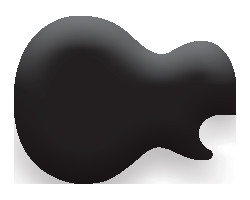 Gibson Les Paul Body Shape®
Gibson Les Paul Body Shape®
Fender Telecaster®
Design Notes: The Fender Telecaster embodies utilitarian chic. Its single-cutaway body with a flat top and squared edges earned it the nickname “slab body.” This minimalist design reflects Leo Fender’s aim for simplicity and mass production in the early 1950s. Originally named the Broadcaster, and later Telecaster, it was the first commercially successful solid-body electric guitar. Functionality and ease of manufacturing were key, and its shape, lacking the curves of later Fender models, was central to Fender’s vision of a durable, easily produced guitar with a clear, cutting tone that defined countless musical genres.
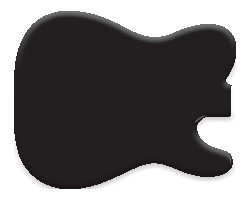 Fender Telecaster Body Shape®
Fender Telecaster Body Shape®
Gibson SG®
Design Notes: The Gibson SG is known for its aggressive yet ergonomic design. Its thin, flat-top body with a double-cutaway and pointed “horns” offers full access to all frets and a distinctive visual edge. Introduced in 1961 as a modern Les Paul variant (SG stands for “Solid Guitar”), the SG was Gibson’s response to Fender’s sleek designs. It quickly became an icon in its own right, favored for its lighter weight and sharp lines. The SG was a bold step away from the thicker Les Paul, modernizing Gibson’s image and enhancing playability with its thinner profile and improved fret access.
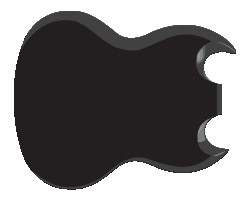 Gibson SG Body Shape
Gibson SG Body Shape
The Avant-Garde: Shapes that Break the Mold
These shapes push the boundaries of traditional guitar design, offering striking visuals and unique playing experiences.
Gibson Flying V®
Design Notes: The Gibson Flying V is pure radical style. Its “V” shaped body was incredibly forward-thinking when introduced in 1958. With two pointed “wings,” the Flying V was Gibson’s attempt to inject modernity into their lineup, appealing to the space-age fascination of the 1950s. Despite initial commercial failure, it gained immense popularity in the late 60s and 70s with rock and heavy metal musicians. The bold design is not just visually arresting but also functional, providing excellent upper fret access and allowing seated players to rest one “wing” on their leg. It has become a symbol of rock and metal’s rebellious spirit.
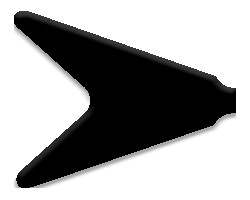 Gibson Flying V Body Shape
Gibson Flying V Body Shape
Gibson Explorer®
Design Notes: The Gibson Explorer is the epitome of angular aggression. Its sharp points, edges, and asymmetrical design made it a standout from day one. Launched alongside the Flying V in 1958 as part of Gibson’s “Modernist Series,” the Explorer was intended to captivate guitarists with its futuristic aesthetic, aligning with the era’s space exploration enthusiasm. Initially too radical for the market, it later found its audience in 70s and 80s rock and metal. Its large, flat body departed from traditional curves, offering a distinctive playing experience with good balance and easy high fret access. The Explorer’s ahead-of-its-time design became a symbol of rock and metal rebellion.
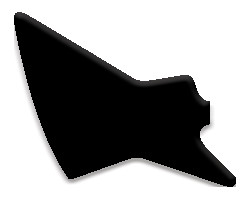 Gibson Explorer Body Shape
Gibson Explorer Body Shape
Ibanez Iceman®
Design Notes: The Ibanez Iceman is a study in sharp angles and bold asymmetry. Its body features pointed contours and a double-cutaway with a hooked “horn” on the lower side and an offset waist, creating a look that is undeniably unconventional and commanding. The Iceman stands apart from more traditional shapes, making a powerful visual statement.
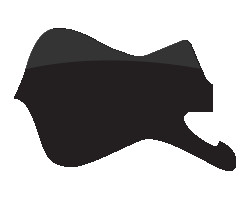 Ibanez Iceman Body Shape
Ibanez Iceman Body Shape
Jackson Rhoads®
Design Notes: The Jackson Rhoads is the embodiment of asymmetrical V-shape design. With sharp, pointed ends and one side longer than the other, it’s instantly recognizable and aggressive. Created in collaboration with the legendary Randy Rhoads and Grover Jackson in the early 1980s, the Rhoads model was designed to be a visually stunning stage guitar that broke away from conventional shapes. It became an icon in heavy metal, its bold, angular appearance and enhanced upper fret access perfectly suiting the technical and theatrical demands of virtuosic metal guitarists.
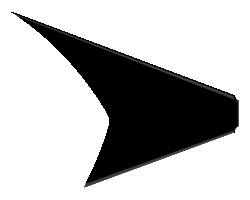 Jackson Rhoads Body Shape
Jackson Rhoads Body Shape
B.C. Rich Warlock®
Design Notes: The B.C. Rich Warlock is pure metal menace. Its aggressive, angular body is defined by sharp points and beveled edges, creating a truly distinctive and imposing appearance. Introduced in the early 1980s by Bernie Rico of B.C. Rich, the Warlock was designed to be unconventional and edgy. Its bold, geometric lines and dramatic silhouette quickly cemented its status as a metal icon.
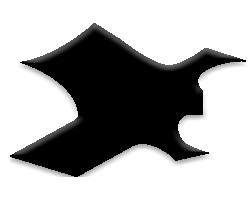 B.C. Rich Warlock Body Shape
B.C. Rich Warlock Body Shape
Dean ML®
Design Notes: The Dean ML is a radical hybrid shape, blending elements of the Flying V and Explorer into an oversized, pointed double-cutaway design. Created by Dean Zelinsky in 1977, the ML was intended to be visually arresting, designed to command attention on stage. Its equal-length, pointed “wings” provide a unique balance. Famously played by “Dimebag” Darrell Abbott of Pantera, the Dean ML achieved iconic status in heavy metal and hard rock.
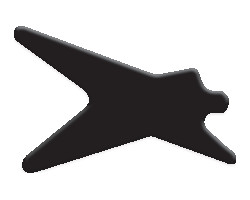 Dean ML Body Shape
Dean ML Body Shape
The Modern Icons: Contemporary Shapes for Today’s Players
These shapes represent modern evolutions in guitar design, often prioritizing ergonomics, versatility, and contemporary aesthetics.
PRS Custom 24®
Design Notes: The PRS Custom 24 is a modern classic, blending sleek aesthetics with exceptional playability. Its double-cutaway body features elegantly contoured curves and a slightly offset waist, offering a contemporary look and comfortable feel. Introduced in 1985 by Paul Reed Smith, the Custom 24 was PRS Guitars’ first model and quickly became their flagship instrument. Meticulously crafted with a mahogany body, often a figured maple top, and a 24-fret neck, the Custom 24 is designed for versatile sound, sustain, and stability, making it a favorite across genres.
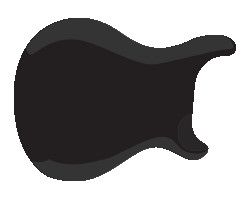 PRS Custom 24 Body Shape
PRS Custom 24 Body Shape
Ibanez RG®
Design Notes: The Ibanez RG series is synonymous with high-performance shred guitars. Its sharp, angular superstrat body features deep cutaways for upper fret access and a sleek, aerodynamic appearance. Originating in 1987 as a refinement of the Ibanez Roadstar II series, the RG was tailored to the demands of shred and metal guitarists. Known for its pointed horns and slim profile, the RG became a staple for 80s and 90s rock and metal virtuosos.
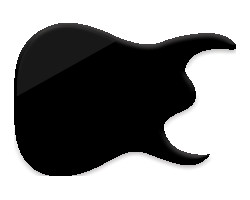 Ibanez RG Body Shape
Ibanez RG Body Shape
Jackson Soloist®
Design Notes: The Jackson Soloist is a refined superstrat designed for speed and precision. Its contoured body, deep cutaways, and slim profile prioritize comfortable playability and unimpeded access to higher frets. Introduced in the early 1980s, the Soloist was among the first neck-through-body guitars, enhancing sustain and stability—a key feature for metal players. Its refined yet aggressive look, combined with high-end hardware, solidified the Soloist as a cornerstone of Jackson’s lineup and a major influence on high-performance guitar design.
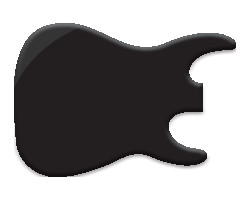 Jackson Soloist
Jackson Soloist
ESP Eclipse®
Design Notes: The ESP Eclipse offers a modern take on the classic single-cutaway. While reminiscent of the Les Paul, the Eclipse features a sleeker, more contoured silhouette, a slightly sharper cutaway, and a thinner body for enhanced comfort and playability. Introduced in the early 1990s, the Eclipse was designed to be a contemporary and versatile single-cut, suitable for various styles, including hard rock and metal. Its more aggressive lines and modern aesthetics blend classic inspiration with modern performance needs.
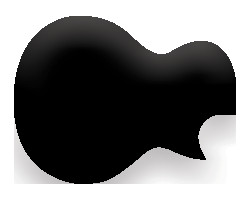 ESP Eclipse Body Shape
ESP Eclipse Body Shape
EVH Wolfgang®
Design Notes: The EVH Wolfgang, designed by Eddie Van Halen, is a unique offset double-cutaway with sleek, arched contours and a distinctive horn design. Developed in partnership with Fender under the EVH brand, after years of Eddie’s personal modifications and experimentation, the Wolfgang is tailored for high-performance playing. Its custom “belly” cut and forearm contour reflect Eddie’s groundbreaking playing style, making it both stylish and functional.
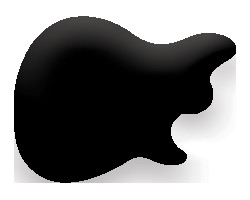 EVH Wolfgang Body Shape
EVH Wolfgang Body Shape
Ernie Ball Music Man John Petrucci®
Design Notes: The Ernie Ball Music Man John Petrucci signature series embodies modern ergonomic design. Its streamlined double-cutaway body features rounded contours and a pronounced forearm scoop for maximum playing comfort. Developed with Dream Theater’s John Petrucci, the design reflects his ergonomic needs, with a slightly angled upper horn for balance and a sculpted lower horn for upper fret access. The recessed neck joint further enhances playability, making it a highly refined instrument for technical players.
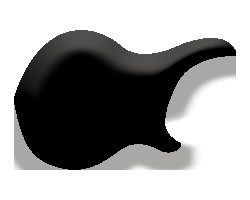 Ernie Ball John Petrucci Body Shape
Ernie Ball John Petrucci Body Shape
Schecter Hellraiser®
Design Notes: The Schecter Hellraiser series is a modern superstrat built for metal. It features an arched top, deep cutaways, a contoured back, and a sleek superstrat shape designed for comfort and high-performance playing. Introduced in the mid-2000s, the Hellraiser embodies Schecter’s commitment to modern metal guitarists, blending classic playability with contemporary aesthetics and features.
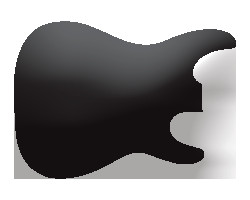 Schecter Hellraiser® Body Shape
Schecter Hellraiser® Body Shape
Charvel San Dimas®
Design Notes: The Charvel San Dimas style guitar is a superstrat built for speed and performance. Its sleek body, deep cutaways, and contoured design are inspired by the hot-rodded guitars from Charvel’s San Dimas shop in the late 70s and early 80s. It’s a modern take on a classic high-performance shape, prioritizing playability and a streamlined aesthetic.
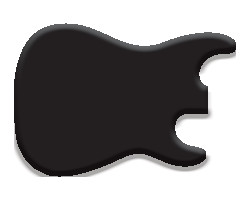 Charvel San Dimas Body Shape
Charvel San Dimas Body Shape
Suhr Modern®
Design Notes: The Suhr Modern represents the pinnacle of modern superstrat design. Its sleek, ergonomic double-cutaway body features distinctive contouring for enhanced playability. A modernized evolution of the superstrat, the Suhr Modern offers a sculpted and refined aesthetic. Introduced in the late 2000s by Suhr Guitars, it’s designed for contemporary guitarists, combining easy high fret access with a balanced and comfortable feel, whether standing or seated. The body shape features a distinctive arm contour and ribcage cut for ultimate comfort.
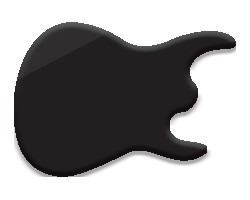 Suhr Modern Body Shape
Suhr Modern Body Shape
Kiesel Aries®
Design Notes: The Kiesel Aries is a cutting-edge superstrat with aggressive aesthetics and modern playability. It features a sleek body with an aggressive beveled top, deep rear body cutaways, and sharp, sculpted horns for excellent upper fret access. The Aries embodies Kiesel’s modern design philosophy, blending striking aesthetics and high performance. Introduced as part of the rebranding from Carvin to Kiesel Guitars, the Aries is emblematic of their commitment to innovation and custom quality.
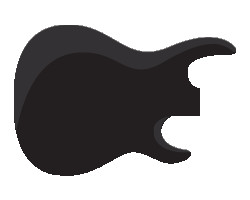 Kiesel Aries Body Shape
Kiesel Aries Body Shape
Strandberg Boden®
Design Notes: The Strandberg Boden is a radical departure from traditional guitar shapes, prioritizing ergonomics and lightweight design. Its compact, headless body features multi-faceted angles and curves, including an arm bevel, ribcage contour, and a pronounced upper horn. Designed by Swedish designer Ola Strandberg based on ergonomic research, the Boden is built for exceptional comfort and playability, even during extended playing sessions. Its innovative features, like the EndurNeck™ profile and unique body shape, have made it popular with progressive metal guitarists.
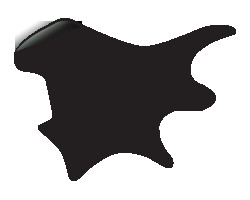 Strandberg Boden Guitar Body
Strandberg Boden Guitar Body
Unique and Notable Shapes: Beyond the Mainstream
These shapes stand out for their unique historical context, distinctive features, or niche appeal.
Gibson ES-335®
Design Notes: The Gibson ES-335 is a versatile semi-hollow icon. Its double-cutaway, thinline body with f-holes blends the warmth of a hollow-body with the feedback resistance of a solid-body. Introduced in 1958, the ES-335 was Gibson’s first semi-hollow model, designed to offer a middle ground between archtops and solid-bodies. Its “ears” or “Mickey Mouse ears” body shape and tonal versatility made it a favorite across genres, from blues and jazz to rock and roll.
 Gibson 335 Body Shape
Gibson 335 Body Shape
Rickenbacker 360®
Design Notes: The Rickenbacker 360 is renowned for its distinctive “jangly” tone and art deco aesthetics. Its sleek, double-cutaway body with rounded edges and a “crescent moon” shape gives it a unique visual appeal. Introduced in the late 1950s as part of Rickenbacker’s Capri series, the 360 became iconic for its thinner, semi-hollow body and “cat’s eye” soundhole. Its innovative body shape is both visually striking and ergonomically designed, favored by musicians seeking a distinctive look and bright, chiming tone.
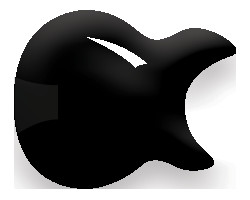 Rickenbacker 360 Body Shape
Rickenbacker 360 Body Shape
Fender Jazzmaster®
Design Notes: The Fender Jazzmaster is the epitome of offset cool. Its distinctive offset-waist body with rounded curves and a relatively flat top offers a unique aesthetic and ergonomic comfort, particularly for seated playing. Introduced in 1958, the Jazzmaster was originally intended for jazz guitarists, hence the name. While it found its primary audience in surf rock and later alternative and indie rock, the Jazzmaster’s body shape has remained a design classic, celebrated for its unique visual appeal.
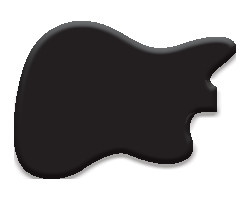 Fender Jazzmaster Body Shape
Fender Jazzmaster Body Shape
Gibson Firebird®
Design Notes: The Gibson Firebird is a reverse-body icon. Its unique offset shape, often described as a reversed Fender Jaguar or Jazzmaster, with a larger lower bout and pointed “wings,” is instantly recognizable. Introduced in 1963 and designed by automotive designer Ray Dietrich, the Firebird was intended to compete with Fender’s modern designs. Its radical “reversed” body shape and through-neck construction made it a distinctive and stylish choice, though initially met with mixed reactions, it has become a Gibson icon.
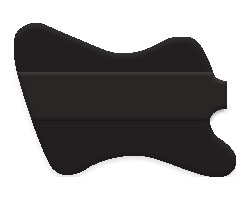 Gibson Firebird Body Shape
Gibson Firebird Body Shape
Gretsch White Falcon®
Design Notes: The Gretsch White Falcon is the “Cadillac of guitars,” embodying opulent style and grand dimensions. Its large-bodied, single-cutaway shape with an arched top and oversized f-holes evokes the elegance of a grand auditorium acoustic guitar. Originally a concept model to showcase Gretsch craftsmanship, the White Falcon became a production model due to popular demand. Its elegant curves and luxurious appointments make it a symbol of guitar extravagance and a coveted design.
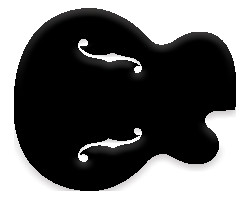 Gretsch White Falcon
Gretsch White Falcon
Danelectro ’59®
Design Notes: The Danelectro ’59 is retro cool with a distinctive “shorthorn” double-cutaway body. Its smaller, symmetrical horns and Masonite body contribute to its unique look and lightweight feel. Introduced in the late 1950s as part of an affordable line, the Danelectro ’59 is celebrated for its unique construction and lipstick tube pickups, producing a characteristic jangly tone. Its simple design and distinctive materials have made it a cult favorite and an iconic Danelectro model.
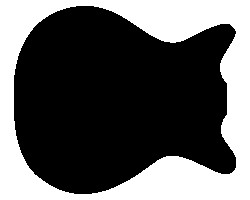 Danelectro 59 Body Shape
Danelectro 59 Body Shape
Fender Mustang®
Design Notes: The Fender Mustang is a compact and comfortable offset. Its short-scale, offset body with rounded contours and a smaller overall size makes it lightweight and player-friendly, particularly for those preferring a more manageable instrument. The Mustang’s distinctive shape and comfortable feel have made it a favorite for players seeking a smaller, stylish guitar.
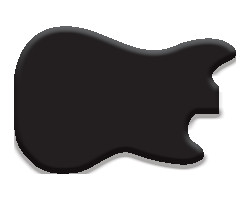 Fender Mustang Body Shape
Fender Mustang Body Shape
Fender Starcaster®
Design Notes: The Fender Starcaster is a unique semi-hollow with a bold offset shape. Its curved outline and pronounced, asymmetrical cutaways give it a standout silhouette. Launched in the mid-1970s, the Starcaster was Fender’s foray into the semi-hollow market, blending solid-body expertise with hollow-body resonance. Its large f-holes and bold design were a departure from Fender’s traditions, aiming for a modern aesthetic and warm, deep tone.
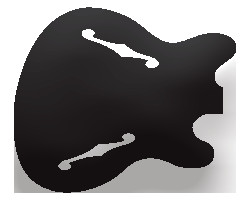 Fender Starcaster Body Shape
Fender Starcaster Body Shape
PRS Singlecut®
Design Notes: The PRS Singlecut offers a refined take on the classic single-cutaway. Its thick body and elegantly carved top are reminiscent of the Les Paul, but with PRS’s signature contoured body shape. Introduced in the late 1990s, the Singlecut was PRS’s entry into the single-cut market, blending traditional aesthetics with modern playability and PRS’s renowned craftsmanship.
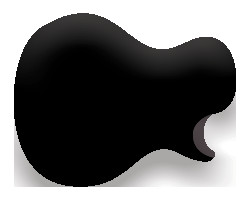 PRS Single Cut Body Shape
PRS Single Cut Body Shape
Parker Fly®
Design Notes: The Parker Fly is a marvel of modern guitar design, known for its incredibly lightweight construction and use of composite materials. Its unique, sculpted body shape is both futuristic and ergonomic. The Parker Fly represents a radical departure from traditional wood-based guitar construction, prioritizing innovation and performance.
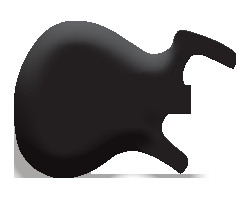 Parker Fly Body Shape
Parker Fly Body Shape
Mosrite Ventures®
Design Notes: The Mosrite Ventures model is a sleek, surf-rock icon. Its slim, double-cutaway body with sharp, pointed horns and a sweeping lower bout embodies the Space Age and California surf culture of the early 1960s. Designed in collaboration with The Ventures, the Mosrite Ventures guitar stood out from traditional shapes, becoming a symbol of Mosrite’s innovative approach and surf rock style.
 Mosrite Ventures Body Shape
Mosrite Ventures Body Shape
Gibson Les Paul Junior Double Cut®
Design Notes: The Les Paul Junior Double Cut is a no-frills rock machine with a symmetrical double-cutaway body. Introduced in 1958 as an affordable Les Paul variant, the Junior Double Cut offered a straightforward, player-friendly design. Its double-cutaway shape reflected a mid-century trend toward more accessible guitar designs, making it a favorite for players seeking a raw and powerful guitar without unnecessary frills.
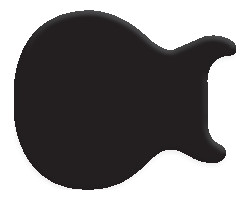 Double Cut Les Paul Jr Body
Double Cut Les Paul Jr Body
Ibanez S Series®
Design Notes: The Ibanez S Series, or Saber Series, is known for its incredibly thin and contoured body. Introduced in the late 1980s, the S Series was designed for maximum comfort and ergonomics, offering a lighter instrument without sacrificing sustain or tone. Its slim profile and razor-thin edges were a significant departure from bulkier guitars, prioritizing playability and comfort.
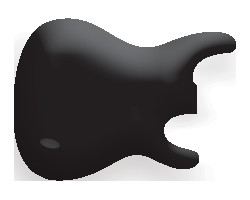 Ibanez S Series Body Shape
Ibanez S Series Body Shape
Fender Thinline Telecaster®
Design Notes: The Fender Thinline Telecaster offers a semi-hollow twist on a classic. Featuring a single f-hole on the upper bout, the Thinline blends the iconic Telecaster silhouette with the resonance of a semi-hollow body. Introduced in the late 1960s, the Thinline was Fender’s attempt to reduce the Telecaster’s weight and offer a different tonal character, combining solid-body twang with hollow-body warmth.
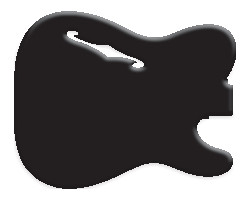 Fender Thinline Telecaster
Fender Thinline Telecaster
Steinberger GL®
Design Notes: The Steinberger GL series is the epitome of minimalist, headless design. Its compact, rectangular, and almost featureless body was a radical departure from traditional shapes. Developed by Ned Steinberger in the early 1980s, the GL series prioritized functionality and playability. Its headless design, composite materials, and direct-pull tuning system created a lightweight, balanced, and highly stable instrument with a distinctive look and feel.
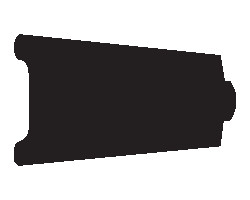 Steinberger GL Body Shape
Steinberger GL Body Shape
Gretsch Duo Jet®
Design Notes: The Gretsch Duo Jet is a compact, chambered classic. Its single-cutaway body with a rounded cutaway is reminiscent of the Les Paul but with Gretsch’s unique flair. Introduced in the early 1950s as Gretsch’s answer to the solid-body boom, the Duo Jet is technically semi-solid, with a chambered mahogany body and maple top. Its comfortable size, balanced shape, and often black finish (“Black Beauty”) made it a visually and sonically distinct choice, favored by iconic players like George Harrison.
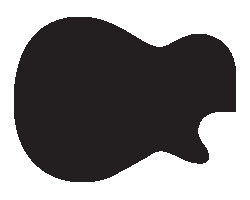 Gretsch Duo Jet Body Shape
Gretsch Duo Jet Body Shape
B.C. Rich Mockingbird®
Design Notes: The B.C. Rich Mockingbird is an ornate and asymmetric design. Its distinctively curved lower bout and extended upper horn create a unique profile and balance. Created in the 1970s by Johnny “Go-Go” Kallas and Bernie Rico, the Mockingbird was part of B.C. Rich’s move into more avant-garde and exotic designs, standing out in an era of guitar innovation. Its flamboyant design was aimed at the rock and metal scenes, offering visual flair and functionality with deep cutaways and comfortable contours.
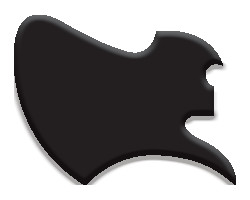 B.C. Rich Mockingbird
B.C. Rich Mockingbird
Gibson L-5®
Design Notes: The Gibson L-5 is the original f-hole archtop, a symbol of jazz guitar elegance. Its large, deep-bodied archtop design with a single-cutaway, f-holes, and rounded Venetian-style body is steeped in jazz history. Designed by master luthier Lloyd Loar and introduced in 1923, the L-5’s body shape was revolutionary, inspired by orchestral string instruments, providing increased volume and projection ideal for jazz bands. Its iconic shape, luxurious materials, and appointments have made the L-5 a symbol of the golden age of jazz guitar.
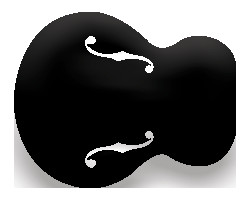 Gibson L5 Body Shape
Gibson L5 Body Shape
Ibanez JEM®
Design Notes: The Ibanez JEM is a highly stylized superstrat designed for virtuoso performance. Its deep, sharp cutaways, exaggerated lower “horn,” and iconic “monkey grip” handle make it instantly recognizable. Created in collaboration with Steve Vai in the mid-1980s, the JEM was designed to meet Vai’s technical and visual demands. Its shape is tailored for high performance and comfort, with flamboyant aesthetics that reflect Vai’s playing style, pioneering features like a 24-fret neck and floating tremolo.
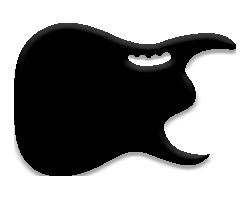 Ibanez Jem Body Shape
Ibanez Jem Body Shape
Choosing Your Stylish Guitar Shape
Selecting the right electric guitar body shape is a personal journey. Consider these factors when making your choice:
- Musical Genre: Certain shapes are strongly associated with particular genres. For rock and blues, the Stratocaster, Telecaster, Les Paul, and SG are classics. Metal often favors Explorer, Flying V, Rhoads, Warlock, and superstrats. Jazz and blues might lean towards semi-hollows and archtops like the ES-335 or L-5.
- Personal Style: Your guitar is an extension of your personal style. Choose a shape that resonates with your aesthetic preferences and stage presence. Do you prefer classic elegance, modern sleekness, or radical designs?
- Playing Comfort: Ergonomics are crucial, especially for long playing sessions. Consider how the guitar sits against your body, whether you play sitting or standing, and how easily you can access the upper frets.
- Tone Considerations: While body shape’s impact on tone is subtle, consider the general tonal tendencies associated with different body styles. Thicker bodies (Les Paul) tend to offer more sustain, while semi-hollows (ES-335) provide warmth and airiness.
Final Thoughts: The Shape of Your Sound
From the enduring curves of the Stratocaster to the futuristic angles of the Strandberg Boden, the evolution of electric guitar body shapes is a testament to innovation and artistic expression. These shapes are more than just physical forms; they are embodiments of musical history, cultural shifts, and the ever-evolving relationship between musicians and their instruments.
Each shape tells a story, reflecting the design philosophies, musical genres, and iconic players who have embraced them. Whether you’re drawn to the timeless elegance of a Les Paul, the rebellious edge of a B.C. Rich Warlock, or the ergonomic precision of a Kiesel Aries, your choice of guitar body shape is a powerful statement about your musical identity. As luthiers continue to push the boundaries of guitar design, the world of Stylish Electric Guitar Shapes will undoubtedly continue to evolve, inspiring musicians for generations to come.


